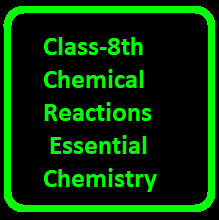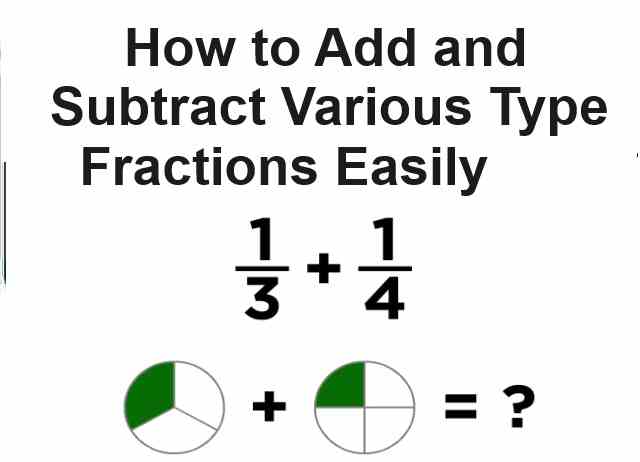Class-8th Chemical Reactions Essential ICSE Chemistry Ch-6 Solutions Bharti Bhawan . We Provide Step by Step Answer of Objective, True False , Match the following , Short / Long Answer Type of Exercise-6 Chemical Reactions . Visit official Website CISCE for detail information about ICSE Board Class-8.
Class-8th Chemical Reactions Essential ICSE Chemistry Ch-6 Solutions of Bharti Bhawan Publishers
| Board | ICSE |
| Publications | Bharti Bhawan |
| Subject | Chemistry |
| Class | 8th |
| Chapter-6 | Chemical Reactions |
| Book Name | Essential |
| Topics | Solution of Objective, True False , Fill in the blanks , Short / Long Answer Type Questions |
| Academic Session | 2021-2022 |
Short-Answer Type Questions
Page 68
Question 1:
What are the following called?
(a) A reaction in which heat or light is evolved
(b) A reaction in which heat or light is absorbed
(c) The type of reaction in which one or more substances add up to form a new product
(d) The type of reaction in which a substance is broken down into simpler substances
(e) The type of reaction in which an element displaces another
Answer :
(a) Exothermic
(b) Endothermic
(c) Combination
(d) Decomposition
(e) Displacement Reaction
Question 2:
Define a double displacement reaction.
Answer : A double displacement reaction is a type of chemical reaction in which the reactant ions exchange places to form new products. Usually, a double displacement reaction results in precipitate formation. The chemical bonds between the reactants may be either covalent or ionic.
Question 3:
What happens in a neutralization reaction?
Answer : A neutralization reaction is when an acid and a base react to form water and a salt and involves the combination of H+ ions and OH– ions to generate water. The neutralization of a strong acid and strong base has a pH equal to 7.
Question 4:
Name three neutral oxides.
Answer : List of neutral oxides
- Nitrous oxide (N2O)
- Nitric oxide (NO)
- Carbon monoxide (CO)
Question 5:
Which of the following is an exothermic reaction and which is an endothermic reaction?
(a) Photosynthesis
(b) Respiration
Answer :
(a) Photosynthesis—Endothermic
(b) Respiration—-Exothermic
Question 6:
Why does your longue feel cold when you put some glucose on it
Answer : When glucose powder is eaten our touched to our tongue, our tongue feels because it absorbs the latent heat of vaporization from body and makes it cold in return.
Question 7:
Which of the following reactions, once started, will continue on its own and which will not?
(a) Decomposition of limestone
(b) Rusting
Answer :
(a) Decomposition of limestone–Will Not
(b) Rusting–Once started, will continue on its own
Question 8:
What would you observe in the following cases?
(a) Carbon dioxide is passed through limewater.
(b) An ignited magnesium ribbon is placed in steam.
(c)A mixture of hydrogen and oxygen is lit.
(d) An iron knife is placed in a solution of copper(II) sulphate.
Answer :
(a) When CO2 gas is passed through lime water it turns milky due to the formation of calcium carbonate [CaCO3] which precipitates as a milky white precipitate.
b) When ignited magnesium ribbon is placed in steam a burning magnesium ribbon continues to burn forming the magnesium oxide and hydrogen.
c) After one set of hydrogen and oxygen molecules have reacted, the energy released triggers molecules in the surrounding mixture to react, releasing more energy. The result is an explosive, rapid reaction that releases energy quickly in the form of heat, light and sound.
d) When Iron knife is placed in a copper sulphate solution, iron sulphate and copper are obtained. In this reaction, Iron displaces copper from copper sulphate compound. The blue colour of copper sulphate solution turns green due to the formation of zinc sulphate.
Question 9:
Give balanced chemical equations representing the following reactions.
(a) On being heated with chlorine, iron forms iron (II) chloride.
(b) Carbon dioxide dissolves in water to form carbonic acid.
(c) When burnt in oxygen, magnesium forms magnesium oxide.
(d) Hydrogen reacts with chlorine in sunlight to give hydrogen chloride.
(e) When heated with Sulphur, iron forms iron (II) sulphide.
Answer :
(a) Fe + Cl2(g) = FeCl2
(b) CO2 + H2O⇌H2CO3
(c) 2Mg(s)+O2(g)→2MgO(s)+energy
(d) H2 + Cl2−→−−−uv light2HCl
(e) Fe+S→FeS
Long-Answer Type Questions
(Solutions of Bharti Bhawan Publishers Essential ICSE Chemistry-Chemical Reactions )
Page 68
Question 1:
Mention three examples of exothermic and three of endothermic reactions.
Answer : Melting ice, evaporation, photosynthesis are examples of endothermic reaction.
Rusting iron, explosives, nuclear fission are examples of exothermic reactions.
Question 2:
Discuss why there is an energy change in a chemical reaction.
Answer : The energy change in a chemical reaction is due to the difference in the amounts of stored chemical energy between the products and the reactants. This stored chemical energy, or heat content, of the system is known as its enthalpy.
Question 3:
Describe the electrolysis of water.
Answer : Electrolysis of water is the process by which water is decomposed into oxygen and hydrogen gas, when electric current is passed through it. Water molecule is decomposed in to H+ and OH- ions, when electric current is passed through it.
Question 4:
Discuss double displacement reactions with two examples.
Answer : A double displacement reaction is a type of chemical reaction where two compounds react, and positive ions (cation) and the negative ions (anion) of the two reactants switch places, forming two new compounds or products.
For example,
Na2S+2HCl→2NaCl+H2S.
AgNO 3 + NaCl → AgCl + NaNO.
Question 5:
Discuss neutralization reactions with an activity to show how such a reaction is carried out.
Answer : Neutralization reaction is when acid reacts with base and produce salt and water.
Question 6:
What are acidic and basic oxides? Give examples with reactions
Answer : Both of them are ionic oxide and can dissolve in water to form basic solutions of the metal hydroxide, whereas non-metals usually form acidic oxides. Sodium oxide, which reacts with water to produce sodium hydroxide. Magnesium oxide, which reacts with hydrochloric acid to form magnesium chloride
Question 7:
Write a note on amphoteric oxides.
Answer : Amphoteric oxides are classified as metal oxides that react with both acids as well as bases to create salts and water. Amphoteric oxides, among many others, include lead oxide and zinc oxide. Amphiprotic molecules, which can either donate or accept a proton (H+), are one sort of amphoteric species.
Objective Type Questions
(Solutions of Bharti Bhawan Publishers Essential ICSE Chemistry-Chemical Reactions )
Page 69
Choose the correct option.
1. In which of the following reactions will heat be evolved?
(a) The formation of NO in lightning
(b) The formation of HI from hydrogen and iodine
(c) The decomposition of limestone
(d) The slaking of lime
Answer : (c) The decomposition of limestone
2 In which of the following reactions will light be absorbed?
(a) Photosynthesis
(b) Respiration
(c) The burning of sulphur
(d) The burning of magnesium
Answer : (a) Photosynthesis
3. Which of the following equations represents a displacement reaction?
(a) 2H2 + O2 –> 2H2O
(b) N2 + 3H2 —> 2NH3
(c) 2H2 O + 2H2 —> 2H2 + O2
(d) Mg + H2O —> MgO + H2
Answer :(d) Mg + H2O —> MgO + H2
4. Which of the following equations represents a double decomposition reaction?
(a) H2 + Cl2 –> 2HCl
(b) 2NaNO3 —-> 2NaNO2 + O2
(c) AgNO3 + NaCl —> AgCl + NaNO3
(d) 2H2 + O2 —> 2H2O + 2H2O
Answer :(c) AgNO3 + NaCl —> AgCl + NaNO3
Match Columns A and B
| A | B |
| (i) N2O | (a) Anhydride of sulphurous acid |
| (ii) N2O5 | (b) Anhydride of sulphuric acid |
| (iii) SO2 | (c) A neutral oxide |
| (iv) SO3 | (d) Anhydride of nitric acid |
Answer :
Update soon
Fill in the Blanks :
1. When ignited in air, magnesium burns with a dazzling ….…white.….. lame. (white/yellow)
2 A …..mixture……… of iron and sulphur contains grey and yellow particles. (mixture/compound)
3. Iron (II) sulphide shows only one kind of particles that are …..grey-black…… in colour. (grey-black/yellow)
4. The volume ratio of the hydrogen and oxygen obtained from water is ……2:1.……… (1:2/2:1)
5. On being heated, baking soda undergoes ……..decomposition……… to give sodium carbonate, water vapour and carbon dioxide. (decomposition/double decomposition)
6. A …..white.……. precipitate is formed when an aqueous solution of silver nitrate is mixed with that or Sodium chloride. (white/red)
7. Phenolphthalein gives a …… red….… colour in an alkali. (yellow / red)
8. A soluble basic oxide turns a moistened …..blue.……. litmus paper (blue/red)
Write T for true and F for false for the following statements.
1. Coal gives heat when burnt. T
2 Rusting is an endothermic process. F
3. On being strongly heated, potassium chlorate gives potassium chloride and oxygen. T
4. The electrolysis of water involves a combination reaction. F
5. An exchange of radicals between two reactants takes place in a double decomposition reaction T
6. Limewater can be neutralized by an acid. T
7. Neutralization is an endothermic process. F
-: End of Class-8th Chemical Reactions Essential ICSE Chemistry Ch-6 Solutions Bharti Bhawan Publishers :-
Return To :- ICSE Class-8 Essential Chemistry Solution Bharti Bhawan Publishers
Thanks




